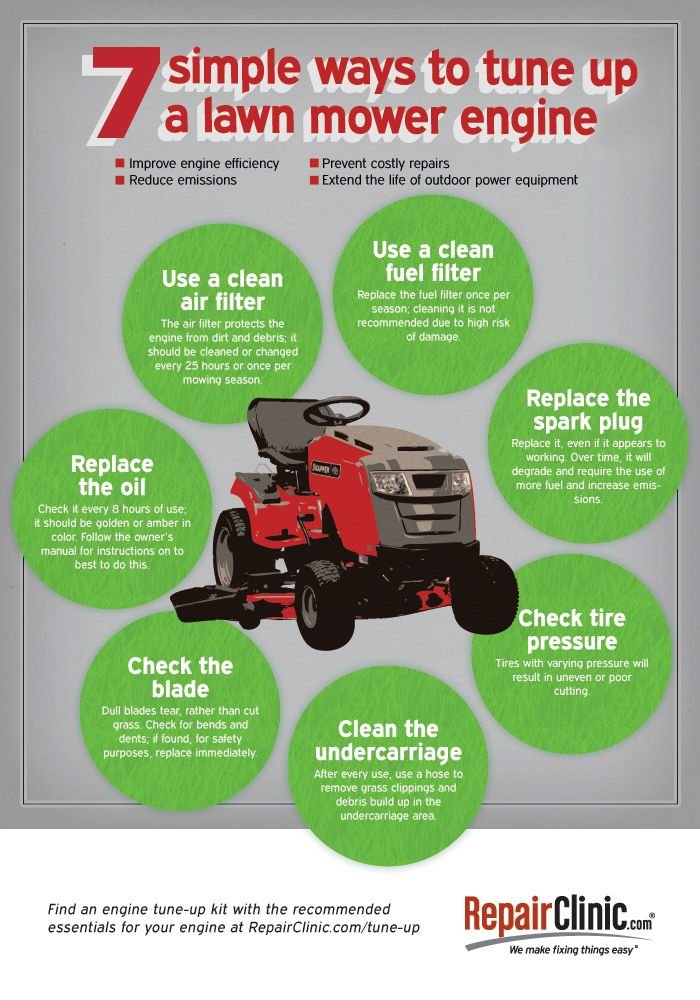Maintaining your lawn mower is crucial for ensuring it performs at its best for years to come. From keeping the blades sharp to checking the oil levels, there are a few essential tips that can make all the difference. In this article, we will explore the key maintenance tips that will not only help your lawn mower last longer but also ensure your lawn remains perfectly manicured. So, grab your tools and get ready to give your lawn mower the TLC it deserves!
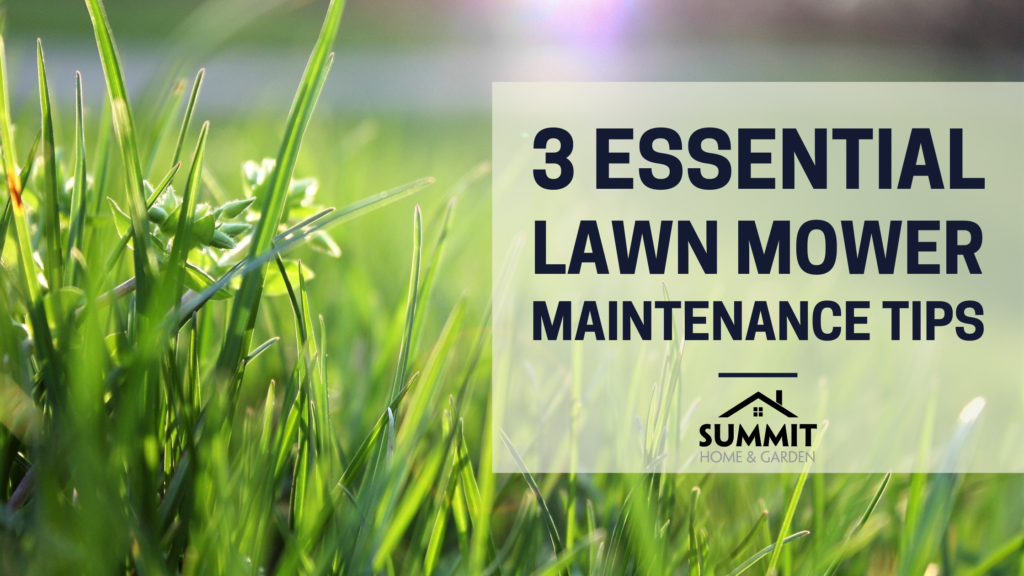
This image is property of i0.wp.com.
1. Regular Cleaning and Inspection
Regular cleaning and inspection of your lawn mower is essential for its long-lasting performance. By following these simple steps, you can keep your mower running smoothly and efficiently.
1.1 Cleaning the Deck
One of the first steps in maintaining your lawn mower is cleaning the deck. Over time, grass clippings and debris can accumulate on the underside of the deck, leading to rust and reduced cutting performance. To clean the deck, start by removing the spark plug wire to prevent accidental starts. Then, use a brush or scraper to remove any grass clippings or dirt from the deck. You can also use a hose to rinse off any remaining debris. Make sure to dry the deck thoroughly before reattaching the spark plug wire.
1.2 Cleaning the Blades
Cleaning the blades is another important aspect of lawn mower maintenance. Grass clippings can build up on the blades, hindering their performance and potentially causing damage to the mower. To clean the blades, first, disconnect the spark plug wire to ensure safety. Then, using a wrench, remove the blade from the mower. Use a wire brush or scraper to remove any debris from the blades. You can also sharpen the blades if necessary. Once cleaned, reattach the blade securely, making sure to tighten the bolts properly.
1.3 Inspecting the Air Filter
The air filter plays a crucial role in preventing dirt and debris from entering the engine. Over time, the air filter can become clogged, restricting airflow and reducing the mower’s efficiency. Regularly inspecting and cleaning or replacing the air filter is essential for optimal performance. To inspect the air filter, locate the filter housing and remove the cover. Check the condition of the filter and clean it if necessary. If the filter is damaged or excessively dirty, replace it with a new one.
1.4 Checking the Spark Plug
The spark plug is responsible for igniting the fuel-air mixture in the engine, enabling combustion. A faulty or dirty spark plug can result in starting issues and poor engine performance. Regularly checking and cleaning or replacing the spark plug is vital for proper lawn mower maintenance. To check the spark plug, disconnect the spark plug wire and remove the plug using a spark plug wrench. Inspect the spark plug for any signs of damage or corrosion. If necessary, clean the spark plug with a wire brush or replace it with a new one.
1.5 Examining the Fuel System
Examining the fuel system is an important part of lawn mower maintenance. Over time, fuel can become contaminated or stale, leading to engine problems. Start by inspecting the fuel tank for any signs of rust or debris. If the fuel appears dirty, it is recommended to drain and replace it with fresh fuel. Additionally, check the fuel lines and fuel filter for any clogs or damage. Clear any obstructions or replace any faulty components to ensure proper fuel flow.
2. Blade Care and Sharpening
Proper blade care and sharpening are crucial for achieving a clean and precise cut with your lawn mower. By following these steps, you can maintain sharp and efficient blades.
2.1 Removing the Blade
Before starting any blade care or sharpening, ensure the ignition is off and the spark plug wire is disconnected. Using a wrench, loosen and remove the bolts that secure the blade to the mower deck. Be careful when handling the blade to avoid any injuries.
2.2 Cleaning the Blade
Once the blade is removed, take the time to clean it thoroughly. Use a wire brush or scraper to remove any grass clippings or debris stuck to the blade surface. Inspect the blade for any signs of damage, such as cracks or excessive wear. If any damage is detected, it is advisable to replace the blade.
2.3 Sharpening the Blade
To maintain a sharp cutting edge, regularly sharpening the blade is necessary. Several methods can be used to sharpen a lawn mower blade, including using a file, grinder, or a sharpening stone. Follow the manufacturer’s instructions or consult a professional for guidance on the proper technique.
2.4 Balancing the Blade
Balancing the blade after sharpening is key to prevent vibrations and ensure smooth operation. A balanced blade reduces stress on the mower’s engine and enhances cutting efficiency. To balance the blade, place it on a balancer tool. If one side of the blade is heavier, carefully remove material from the heavier side until the blade is balanced.
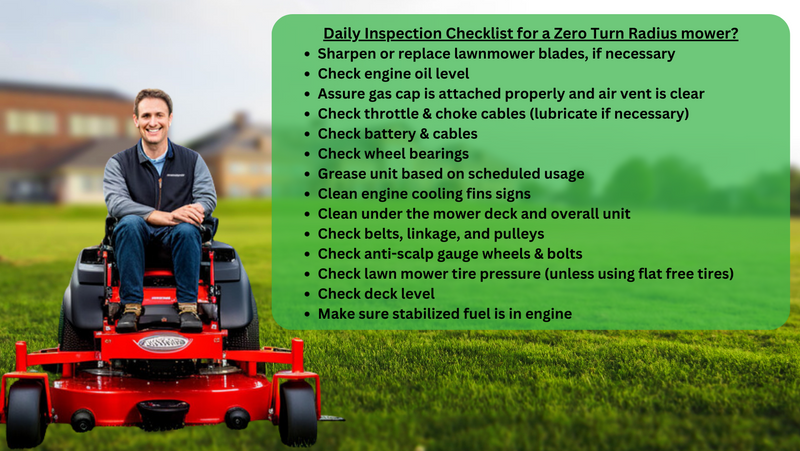
This image is property of www.mowmore.com.
3. Oil and Lubrication
Proper oil and lubrication maintenance is vital for the longevity and performance of your lawn mower. Regularly checking and changing the oil, lubricating moving parts, and greasing wheel bearings will keep your mower running smoothly.
3.1 Changing the Oil
Regularly changing the oil in your lawn mower is essential for optimal engine performance. Start by locating the oil drain plug underneath the mower. Place a container beneath the plug to catch the old oil. Unscrew the drain plug and allow the oil to drain completely. Once drained, replace the drain plug and refill the engine with the recommended type and amount of new oil.
3.2 Checking and Topping-Up Oil Levels
In addition to changing the oil, regularly checking the oil levels is crucial. Low oil levels can lead to engine damage. To check the oil levels, locate the oil dipstick or oil fill tube on the mower. Remove the dipstick or unscrew the oil fill cap and wipe it clean. Insert the dipstick back into the tube or screw the cap back on without tightening. Remove it again and check the oil level. If low, add the appropriate oil to bring it to the recommended level.
3.3 Lubricating Moving Parts
Lubricating the moving parts of your lawn mower helps reduce friction and prolong the life of these components. Consult your owner’s manual for specific lubrication points and recommendations. Use a lubricant suitable for the particular part, such as machine oil or lithium grease. Apply a small amount of lubricant to each designated point, ensuring smooth movement.
3.4 Greasing Wheel Bearings
Properly greasing the wheel bearings is crucial for smooth wheel operation. Locate the grease fittings or zerk fittings on the wheels. Attach a grease gun and pump the recommended type of grease into each fitting until you see grease coming out from around the bearings. Wipe off any excess grease to prevent accumulation of dirt and debris.
4. Filter Maintenance
Maintaining and cleaning the air and fuel filters of your lawn mower is essential to prevent engine damage and ensure optimal performance.
4.1 Cleaning or Replacing the Air Filter
The air filter prevents dirt, debris, and other particles from entering the engine. Over time, the air filter can become clogged with debris, reducing airflow and causing the engine to run inefficiently. Regularly cleaning or replacing the air filter is necessary. Consult your owner’s manual for the location and removal procedure of the air filter. If the filter is not washable, replace it with a new one. If washable, clean it according to the manufacturer’s instructions and allow it to dry before reinstalling.
4.2 Cleaning the Fuel Filter
The fuel filter helps prevent contaminants from reaching the engine and causing damage. Regularly cleaning the fuel filter is crucial for the proper functioning of your lawn mower. Consult your owner’s manual for locating the fuel filter and the recommended cleaning procedure. Clean or replace the fuel filter if it appears clogged or contaminated.
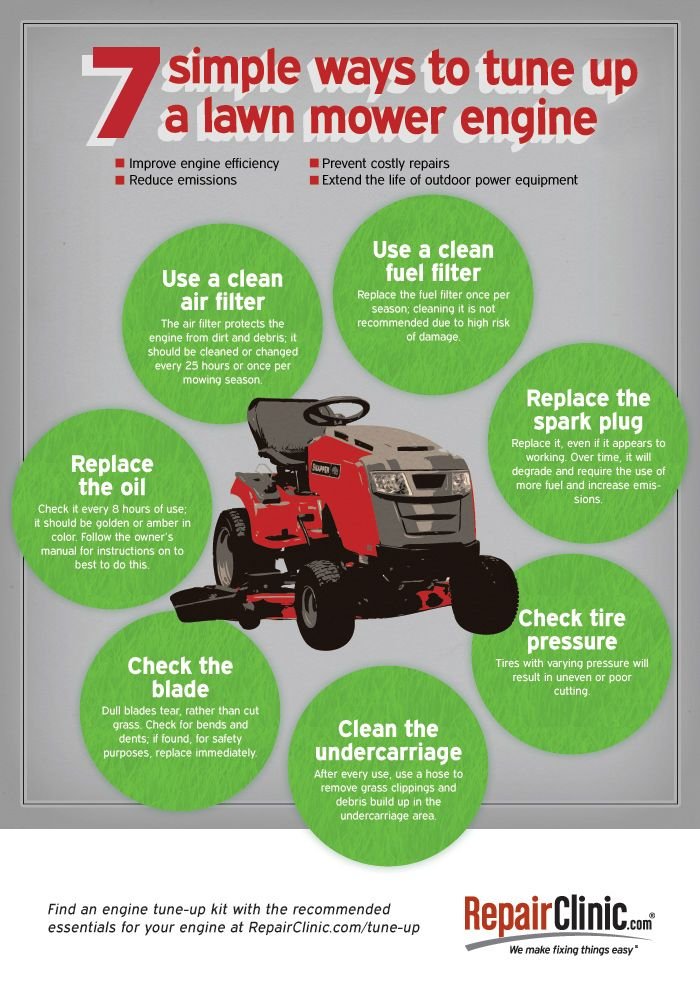
This image is property of i.pinimg.com.
5. Spark Plug Maintenance
The spark plug is an essential component of your lawn mower’s ignition system. Proper maintenance and cleaning of the spark plug ensure reliable starting and efficient combustion.
5.1 Cleaning or Replacing the Spark Plug
Over time, the spark plug can become fouled with carbon deposits or corroded, leading to starting issues and reduced engine performance. Regularly cleaning or replacing the spark plug is necessary for optimal operation. Consult your owner’s manual for locating the spark plug and the recommended cleaning procedure. If the spark plug is damaged, corroded, or excessively dirty, it is advisable to replace it with a new one.
5.2 Gapping the Spark Plug
The gap between the spark plug’s electrodes plays a crucial role in proper ignition and combustion. Improperly gapped spark plugs can result in misfires and engine problems. To gap the spark plug, use a spark plug gap tool or feeler gauge. Consult your owner’s manual for the appropriate gap measurement. Adjust the gap by carefully bending the ground electrode until it matches the specified measurement.
6. Battery Maintenance
If your lawn mower is equipped with a battery, proper battery maintenance is essential for reliable starting and overall performance.
6.1 Cleaning the Battery Terminals
Over time, battery terminals can accumulate corrosion, hindering proper electrical contact. Regularly cleaning the battery terminals is crucial for optimal battery performance. Start by disconnecting the battery cables, starting with the negative (-) terminal, then the positive (+) terminal. Use a wire brush or battery terminal cleaner to remove any corrosion or debris from the terminals. Reconnect the battery cables, ensuring a secure and tight connection.
6.2 Testing the Battery
Periodically testing the battery is necessary to determine its health and performance. Consult your owner’s manual for the recommended battery testing method. If the battery fails the test or does not hold a charge, consider replacing it with a new one.
6.3 Charging or Replacing the Battery
If your lawn mower’s battery is not maintenance-free, regularly charging it is crucial to ensure reliable starting. Follow the manufacturer’s instructions for safely charging the battery. If the battery no longer holds a charge or fails to start the mower, it may be time for a replacement. Consult your owner’s manual or a professional for guidance on choosing and installing a new battery.

This image is property of www.weingartz.com.
7. Fuel System Tips
Proper fuel system maintenance is essential for the smooth operation and longevity of your lawn mower. Follow these tips to keep your fuel system in excellent condition.
7.1 Using Fresh Fuel
Using fresh, clean fuel is crucial for optimal engine performance. Stale or contaminated fuel can cause starting issues and poor combustion. Always use fresh fuel and avoid storing fuel for extended periods.
7.2 Stabilizing the Fuel
If you anticipate storing your lawn mower for an extended period, adding a fuel stabilizer to the tank is recommended. Fuel stabilizers help prevent fuel deterioration and ensure easier starting when the mower is taken out of storage. Follow the manufacturer’s instructions for the proper amount of stabilizer to use.
7.3 Draining the Fuel System
Before storing your lawn mower for an extended period, it is advisable to drain the fuel system. Stale fuel can cause clogs and damage to the carburetor and fuel lines. Consult your owner’s manual for specific instructions on safely draining the fuel from the mower’s tank and carburetor.
7.4 Flushing the Fuel Tank
If you suspect any contamination or debris in the fuel tank, flushing it is necessary for proper fuel system maintenance. Consult your owner’s manual for instructions on safely flushing the fuel tank. Use a suitable fuel tank cleaner or a mixture of fuel and cleaner to remove any residue or contaminants. Rinse the tank thoroughly with fresh fuel before refilling.
8. Belt and Tire Care
Proper care and maintenance of the drive belt and tires are important for the efficient and safe operation of your lawn mower.
8.1 Checking and Replacing the Drive Belt
Regularly inspecting the drive belt is crucial to ensure it is in good condition and properly routed. Look for any signs of wear, cracks, or fraying. If the drive belt appears damaged or excessively worn, it is recommended to replace it with a new one. Follow the manufacturer’s instructions or consult a professional for guidance on replacing the drive belt.
8.2 Inspecting Tire Condition
Inspecting the condition of the tires is important for maintaining traction and stability while mowing. Check the tires for any signs of excessive wear, cuts, or bulges. Properly inflated and well-maintained tires provide better maneuverability and a smoother ride. If any tire appears damaged or worn beyond acceptable limits, consider replacing it.
8.3 Maintaining Proper Tire Pressure
Proper tire pressure is essential for optimal performance and safe operation of your lawn mower. Overinflated or underinflated tires can affect cutting quality and cause handling issues. Consult your owner’s manual for the recommended tire pressure. Regularly check and adjust the tire pressure using a tire pressure gauge and an air compressor if necessary.
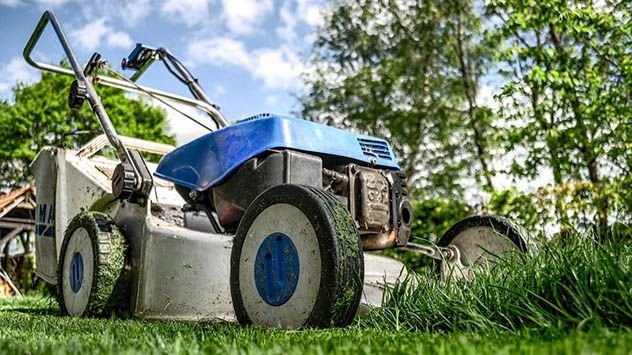
This image is property of s43635.pcdn.co.
9. Storage and Off-Season Care
Proper storage and off-season care are essential for keeping your lawn mower in good condition during periods of non-use.
9.1 Preparing for Winter Storage
Before storing your lawn mower for the winter, it is crucial to properly prepare it to prevent any damage or deterioration. Start by cleaning the mower thoroughly and removing any debris. Change the oil and fuel filter, and drain the fuel tank following the manufacturer’s instructions. Consider adding a fuel stabilizer to the tank to prevent fuel deterioration. Remove the battery if applicable and store it in a cool, dry place. Lastly, cover the mower with a protective cover to shield it from dust and moisture.
9.2 Storing the Lawn Mower
Choosing the right storage location is important to protect your lawn mower from the elements. Find a dry, well-ventilated area, such as a shed or garage, to store your mower. Ensure the storage area is free from any potentially harmful substances or materials that could damage the mower.
9.3 Fuel System Considerations
When storing your lawn mower for an extended period, take appropriate measures to prevent fuel system issues. Either drain the fuel from the tank and the carburetor or use a fuel stabilizer as previously mentioned. Draining the fuel system helps prevent fuel deterioration and potential clogs or damage to the carburetor.
9.4 Preparing for Spring Start-Up
When the spring season approaches and it’s time to start using your lawn mower again, proper preparation is crucial for a smooth start. Remove the protective cover and inspect the mower for any signs of damage or wear. Reconnect the battery if applicable or install a fully charged battery. Refill the fuel tank with fresh fuel, ensuring it is free from any contaminants. Check the engine oil level and top it up if necessary. Lastly, visually inspect all the components and perform any necessary maintenance tasks before starting the mower.
10. Safety and General Tips
Ensuring safety and following general maintenance practices are essential for the proper and safe operation of your lawn mower.
10.1 Following Safety Precautions
Always prioritize safety when operating or maintaining your lawn mower. Wear appropriate safety gear, such as protective eyewear, gloves, and closed-toe shoes. Keep bystanders, especially children and pets, at a safe distance. Avoid mowing on steep slopes or wet surfaces. Familiarize yourself with the mower’s safety features and always follow the manufacturer’s guidelines.
10.2 Reading the Owner’s Manual
The owner’s manual is a valuable resource that provides specific instructions and guidelines for your particular lawn mower model. Take the time to read and understand the manual thoroughly to ensure proper maintenance practices and to address any specific maintenance or troubleshooting needs.
10.3 Using the Right Fuel
Using the correct fuel for your lawn mower is crucial for its optimal performance and longevity. Consult the owner’s manual for the recommended fuel type and octane rating. Using the wrong fuel can lead to starting issues, engine damage, and voided warranty.
10.4 Maintaining a Level Cut
To achieve a well-maintained and even lawn, it is important to maintain a level cut with your lawn mower. Regularly check the deck height adjustment mechanism to ensure it is functioning properly. Adjust the cutting height according to your desired grass length and mowing conditions. Take care to avoid cutting the grass too low, as this can damage the turf and expose it to stress and disease.
By following these comprehensive lawn mower maintenance tips, you can ensure the long-lasting performance and reliability of your mower. Regular cleaning, inspection, and maintenance of key components such as the deck, blades, filters, spark plug, fuel system, belts, and tires will keep your lawn mower running smoothly and efficiently. Remember to prioritize safety and consult your owner’s manual for specific maintenance guidelines and recommendations. With proper care and attention, your lawn mower will continue to provide a beautifully manicured lawn season after season.

